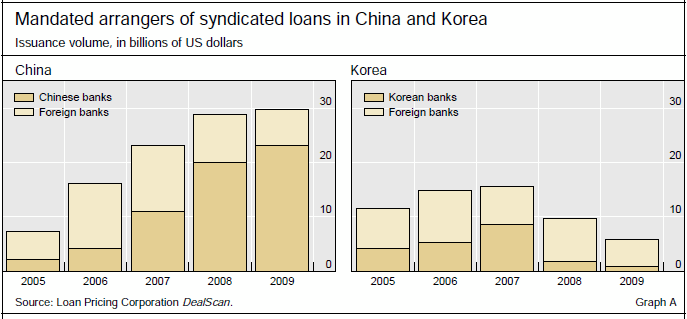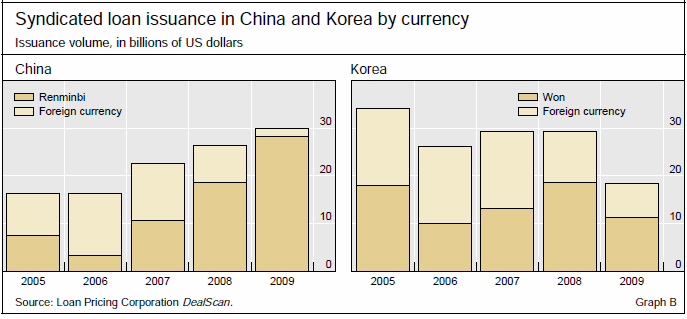Syndicated loans in China and Korea
(Extract from page 46 of BIS Quarterly Review, September 2010)
The cases of China and Korea illustrate how conditions in domestic banking systems have affected syndicated loan markets. China was one of the few countries where syndicated loan issuance continued to grow through the global financial crisis. An important factor that has contributed to the expansion in China was the ample supply of bank credit by local banks. Traditionally, international banks dominated in the mandated manager "league table" of syndicated loan issuance to Chinese borrowers. However, starting from 2007, the annual volume of syndicated loans issued in China with domestic banks as mandated managers has increased markedly, more than offsetting the withdrawal by international banks (Graph A, left-hand panel). By contrast, the amounts of syndicated loans with local banks as mandated managers fell more than proportionately in Korea, contributing to the substantial decline in syndicated loan issuance over that period (Graph A, right-hand panel).
The unwillingness of international banks to participate in loan syndicates during the crisis was also evidenced in the issuance data by currency. In 2006, almost 80% of syndicated loans issued in China were denominated in foreign currencies, mainly US dollars. Since then, the share of foreign currency denominated loans in total has contracted sharply, to less than 5% in 2009 (Graph B, lefthand panel). Given that the capacity of foreign banks to lend in renminbi is rather limited, this indicates that local banks have played an important role in supporting syndicated lending in China. In Korea, in contrast, both won-denominated and foreign currency denominated syndicated lending fell in 2009 (Graph B, right-hand-panel).


